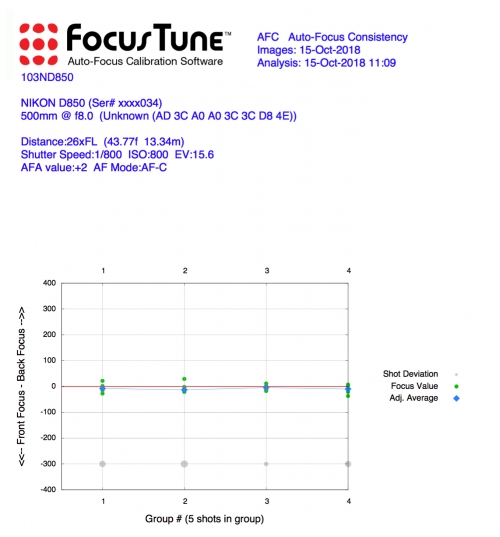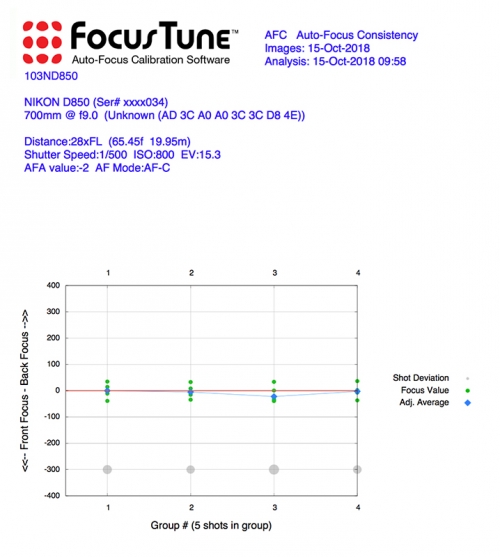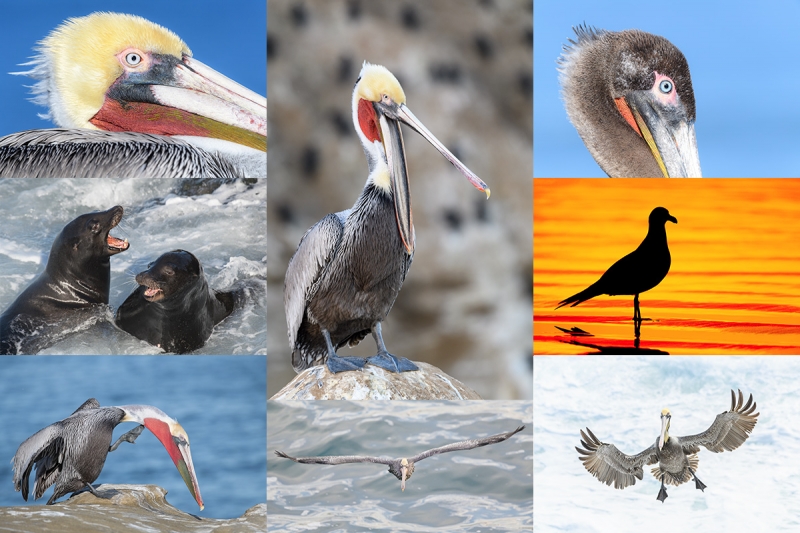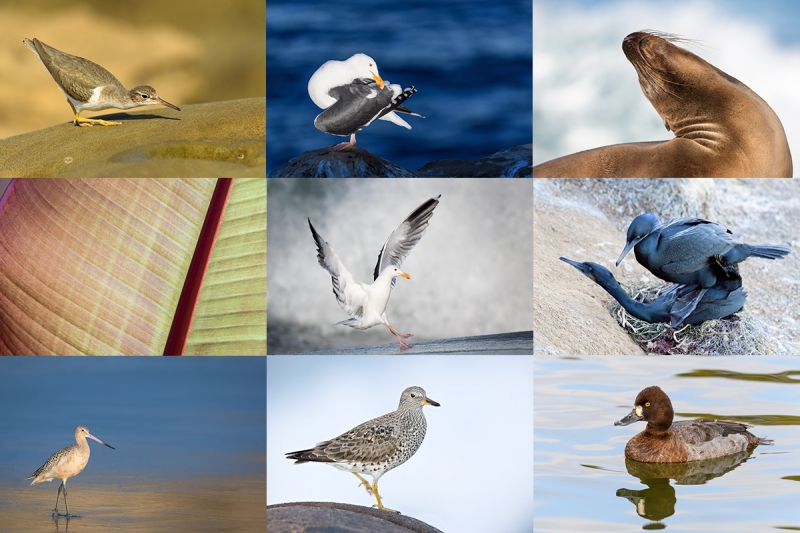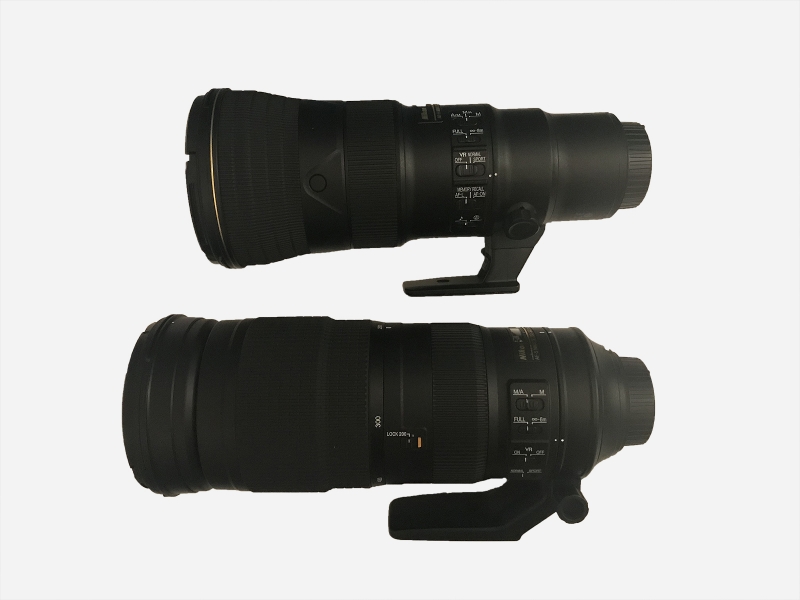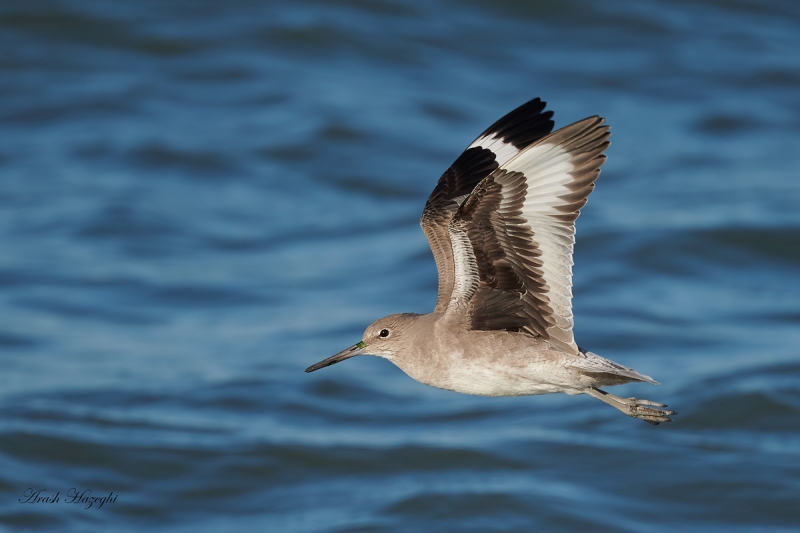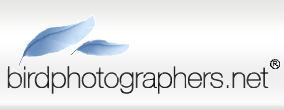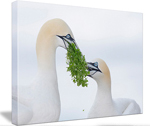October 21st, 2018 When I Got on the Ship …
When I got on the ship, Berger Brothers on Long Island, NY had a Nikon 500 PF in stock right and there is a possibility that it is still available. As they are pretty much impossible to get, give Brad Berger a call if you would like to find out and possibly own this lens: Brad Berger President, Berger Bros Camera, P 516-496-1000.
Stuff
As I am traveling in the Southern Ocean, I will be without internet access from the afternoon of October 19 until November 1. When I left, there were only two people signed up for the Early Winter DeSoto IPT; do consider joining us.
Galapagos Photo-Cruise of a Lifetime/Limit 12/Openings: 3
Right now I have nine folks committed to the 2019 Galapagos Photo Cruise. A friend who had committed to the trip learned that he and his wife might not be able to attend. Thus, I have room for a couple or for two same-sex roommates, and for a male single. If the archipelago is on your bucket list, please get in touch via e-mail asap with questions. If you might be registering with a friend or a spouse do ask about the two at a time discount. See the complete details here.
BIRDS AS ART
BIRDS AS ART is registered in the U.S. Patent and Trademark Office.


Selling Your Used Photo Gear Through BIRDS AS ART
Selling your used (or like-new) photo gear through the BAA Blog is a great idea. We charge only a 5% commission. One of the more popular used gear for sale sites charged a minimum of 20%. Plus assorted fees! Yikes. They went out of business. And e-Bay fees are now up to 13%. The minimum item price here is $500 (or less for a $25 fee). If you are interested please scroll down here or shoot us an e-mail with the words Items for Sale Info Request cut and pasted into the Subject line :). Stuff that is priced fairly — I offer pricing advice to those who agree to the terms — usually sells in no time flat. Over the past year, we have sold many dozens of items. Do know that prices on some items like the EOS-1D Mark IV, the old Canon 100-400, the old 500mm, the EOS-7D and 7D Mark II and the original 400mm DO lens have been dropping steadily. You can always see the current listings by clicking on the Used Photo Gear tab on the orange-yellow menu bar near the top of each blog post page.
Airbnb
For the past few months, I have been hearing folks use the word Airbnb, most notably, Amy Novotny. Out of curiosity I asked a few questions. What I learned amazed me. Join Airbnb and become part of a community that connects global travelers with local hosts across the world. Find a place to stay and discover things to do. Airbnb lists more than 4.5 million homes across 200 countries; you’ll find spacious, affordable options for every occasion. With Airbnb you will travel with confidence as reviews from past guests help you find the right fit. Once you do, our secure messaging makes it easy to coordinate with your host. And Airbnb support teams are available 24/7. Last night I made a reservation for an Airbnb apartment for my upcoming January San Diego visit: 13 nights with a full kitchen and two bedrooms.
Yikes. I almost forgot the best part: Airbnb rates average less than half of even the least expensive chain hotels and motels. If you would like to save $40 on your first booking sign up by using this link: Airbnb. Airbnb does charge clean-up and service fees that make short stays less attractive bargains than long stays.
Those who prefer to stay in a motel or hotel are invited to use the Booking.com link below to save $25.00.
Booking.Com
Several folks on the UK IPT used the Booking.Com link below for their Edinburgh hotels, got great rates, and saved a handsome $25.00 in the process. If you too would like to give Booking.Com a shot, click here and to earn a $25 reward on your first booking. Thanks to the many who have already tried and used this great service.
Money Saving Reminder
If you need a hot photo item that is out of stock at B&H, would enjoy free overnight shipping, and would like a $50 discount on your first purchase, click here to order and enter the coupon code BIRDSASART at checkout. If you are looking to strike a deal on Canon or Nikon gear (including the big telephotos) or on a multiple item order, contact Steve Elkins via e-mail or on his cell at (479) 381-2592 (Eastern time) and be sure to mention your BIRDSASART coupon code and use it for your online order. Steve currently has several D850s in stock along with a Nikon 600mm f/4 VR. He is taking pre-orders for the new Nikon 500 P and the Nikon Z6 mirrorless camera body.
Gear Questions and Advice
Too many folks attending BAA IPTs and dozens of photographers whom I see in the field and on BPN, are–out of ignorance–using the wrong gear especially when it comes to tripods and more especially, tripod heads… Please know that I am always glad to answer your gear questions via e-mail. Those questions might deal with systems, camera bodies, accessories, and/or lens choices and decisions.
|
|
Fine-tune Values for the 500 PF
|
AF Fine-tuning of the Nikon 500mm f/5.6 PF Lens
When I finally got my hands on the Nikon 500 PF early on Monday morning, October 15 — thanks to the kindness of IPT veteran Michael Goodman, I set to work fine-tuning the focus (aka, micro-adjusting) the new lens with my two D850s, each — as you can see above — with both the TC-E14 III and the TC-17 II. To learn how the lens arrived at the last possible second, see the Last Minute Miracle blog post here. I keep a careful record of all micro-adjusting in an Excel file. This is doubly important with Nikon as the Nikon camera bodies do not recognize different teleconverters (or lenses) by serial number. This is a huge problem for professionals and serious amateurs who often own two of the same TCs (or lenses).
I love micro-adjusting my D-850 bodies because of the Focus Peaking feature that, among Nikon bodies, is available only on the D-850. I check the Focus Peaking with AF fine-tune set to zero two or three times. In less than a minute (after setting up and carefully aligning my LensAlign), I can tell if the combination of gear I am testing is pretty close to right on or is front- or back-focused. Next I change the AF fine-tune value as indicated. You can learn the details of Focus Peaking Fine-tuning in the Nikon AF Fine-tune e-Guide here. Once I have an approximate value I run an Auto Focus Consistency (AFC) test using FocusTune. You can see the results of two AFC tests below. And you can learn how to do them (and lots more) in my LensAlign/FocusTune Micro-Adjusting Tutorial e-Guide here. I should have mentioned that in order to do any type of AF Fine-tuning or micro-adjusting as detailed in the two e-Guides above, you need to have purchased the LensAlign MK II kit including FocusTune here.
The six AF fine-tunes above took well less than two hours. And half of that time is spent setting up the tripods and aligning everything using Michael Tapes’ brilliant True Parallel Alignment (TPA) system, available only with the LensAlign kit. TPA is what sets LensAlign head and shoulders above all other micro-adjusting devices, all of which BTW, are (not unexpectedly) a lot cheaper than LensAlign MK II kit including FocusTune Kit.
Some folks who own D-850s might wish to get by with the Focus Peaking fine-tuning and the single Nikon e-Guide. But, as above, I use the Focus Peaking feature to point me in the right direction and then use an AFC test or two to fine tune those results. Once I get a great AFC test and confirm it, I am 100% confident that I will get the absolute sharpest images possible with a given gear combination. In some cases the fine-tune value determined by Focus Peaking may be exactly the same exactly the same as the value as determined by an AFC test(see two of those below). At other times they may be a bit higher or lower by +/- 4. In those cases I always go with the AFC-determined value. Note that once I get an excellent result with an AFC test, I will always run it again to confirm it. .
Yes, focus fine-tuning and micro-adjusting can be frustrating at times and time consuming to some degree, but for me, it does not make sense to own a $10,000 lens and a $3,000 camera body and not put in the time and expense to ensure that you will be making sharp images (barring operator error of course). 🙂
The Big Misconception
When folks see a large AF fine-tune value such as -15 above for the 500 PF/1.7TC-E, they think that something is wrong with the gear. Be assured that there is nothing wrong at all. Different combinations of gear need different fine-tune adjustments depending on how the tolerances fit together. The images that I make with the 1.7 TC with my main D-850 (-7) will be just as sharp as those made with my back-up D-850 (-15). The next blog post will show the first test images of birds in the field, images that will confirm the accuracy of my Focus fine-tuning efforts.
|
|
AFC Fine-tune FocusTune Graph for my main D850 and the 500 PF
|
AFC Fine-tune FocusTune Graph for my main D850 and the 500 PF
Above is the AFC Fine-tune FocusTune Graph for the D850 and the 500 PF. The results with the fine-tune value set at +2 are about as close to perfect as you can get. The small grey dots, the shot deviation, on the -300 line show that AF with this combo is very consistent as the clusters are tight. In a perfect world, every AFC value would be exactly the same and the graph would be a perfect straight line right on the horizontal axis of the graph. In the real world phase detection autofocus is never perfect; you can expect variation in the AFC values and an occasional outlier, a value that is obviously out of pattern and seems to make no sense at all. Note that the smallest grey dot is on the vertical 3 axis. This shows the tightest cluster. Compare the grey dots on this graph with those on the graph below.
|
|
AFC Fine-tune FocusTune Graph for my main D850, the TC-E 17, and the 500 PF
|
AFC Fine-tune FocusTune Graph for my main D850, the TC-E 17, and the 500 PF
Note that the focus deviation on this graph is wider than onthe first graph. This is to be totally expected once you add a teleconverter to the mix. The larger the teleconverter, the more light is lost to the AF system, and wider the shot deviation will be. That said, the results of the AFC test at -2 immediately above are quite good.
A Nikon AF Fine-tune e-Guide Free Update
Contrary to what I wrote in the guide, I have realized that using the AF/M switch on the left side of the camera body to turn AF off and then on again is much easier than moving the slider switch on the lens; the switch on the camera body is more accessible and there are only two positions as compared to three on the lens … I tried it and liked it. A lot better.
|
|
|
San Diego offers a wealth of very attractive natural history subjects, including and especially the Pacific race of California Brown Pelican. With annual visits spanning more than four decades, I have lots of photographic experience there … Click on the composite to enjoy a larger version.
|
2019 San Diego 4 1/2-DAY BIRDS AS ART Instructional Photo-Tour (IPT) SUN JAN 20, 2019 thru and including the morning session on THURS JAN 24: 4 1/2 days: $2099.
(Limit: 10/Openings: 7)
Introductory Meet and Greet at 7:00pm on the evening before the IPT begins; SAT JAN 19, 2019.
Please see the Dancing Grebe Morning Add-On Info below
Join me in San Diego to photograph the spectacular breeding plumage Brown Pelicans with their fire-engine red and olive green bill pouches; Brandt’s (nesting with eggs and possibly chicks) and Double-crested Cormorants; breeding plumage Wood and Ring-necked Duck; other duck species possible including Lesser Scaup, Redhead, and Surf Scoter; a variety of gulls including Western, California, and the gorgeous Heermann’s, all in full breeding plumage; shorebirds including Marbled Godwit, Willet, Sanderling and Black-bellied Plover; many others are possible including Least, Western, and Spotted Sandpiper, Whimbrel, Black and Ruddy Turnstone, Semipalmated Plover, and Surfbird; Harbor Seals (depending on the current regulations) and California Sea Lions; and Bird of Paradise flowers. And as you can see by studying the IPT cards, there are some nice bird-scape and landscape opportunities as well. Not to mention a ton of excellent flight photography opportunities and instruction.
Please note: where permitted and on occasion, ducks and gulls will be attracted (or re-located) with offerings of grains and healthy breads.
Learning Exposure, Whether You Like It Or Not
Whether you like it or not, we will be beating the subject of exposure like a dead horse. In every new situation you will hear my thoughts on the exposure situation along with my thoughts on both Nikon and Canon histograms and the subject of blinkies. Whether you like it or not, you will learn to work in manual mode and to get the right exposure every time as long as a bird gives you ten seconds with the light constant.And you will learn what to do when the light is changing constantly. What you learn about exposure will be one of the great take-aways on every IPT.
|
|
|
Though the pelicans will be the stars of the show on this IPT, there will be many other handsome and captivating subjects in wonderful settings. Click on the composite to enjoy a larger version.
|
It Ain’t Just Pelicans
With gorgeous subjects just sitting there waiting to have their pictures taken, photographing the pelicans on the cliffs is about as easy as nature photography gets. With the winds from the east almost every morning there is usually some excellent flight photography as well. And the pelicans are almost always doing something interesting: preening, scratching, bill pouch cleaning, or squabbling. And then there are those crazy head throws that are thought to be a form of intra-flock communication. You will be guided as to how to make the best of all of those opportunities. And depending on the weather and local conditions and tides, there are a variety of fabulous photo chances available in and around San Diego.
|
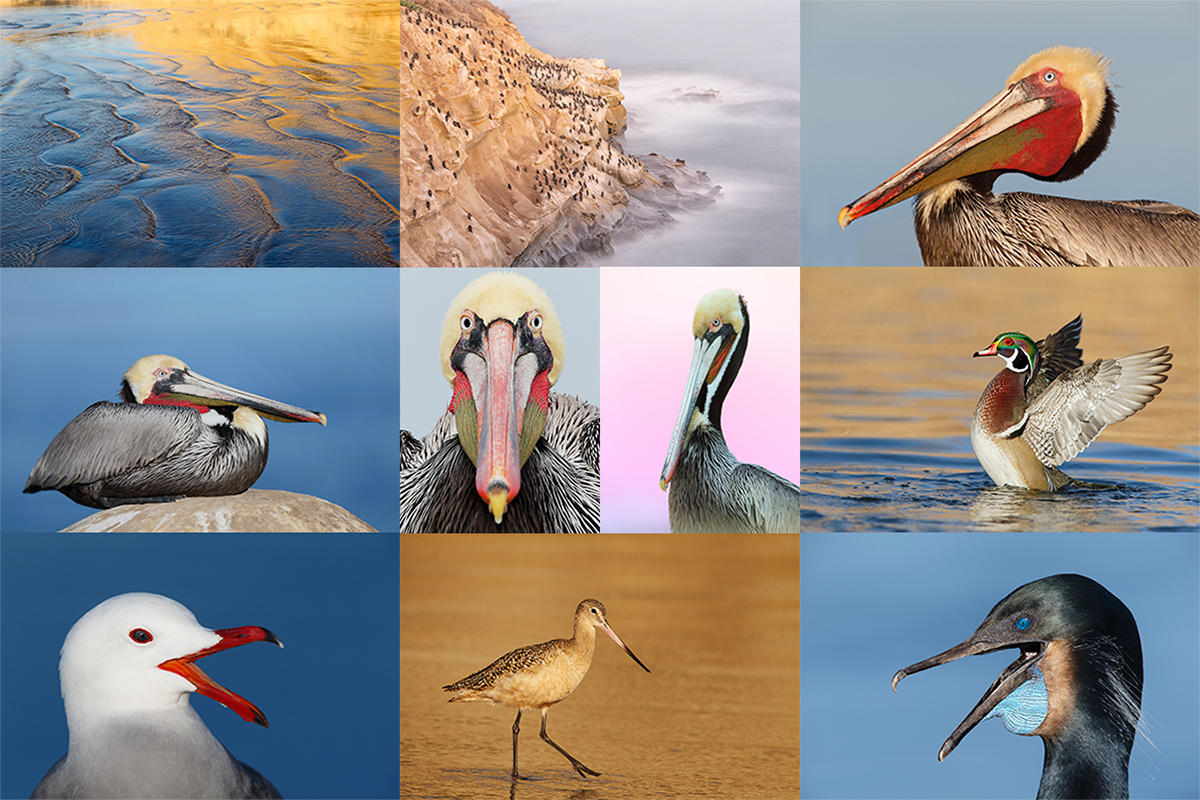
|
|
Did I mention that there are wealth of great birds and natural history subjects in San Diego in winter? Click on the composite to enjoy a larger version.
|
The San Diego Details
This IPT will include five 3 1/2 hour morning photo sessions, four 2 1/2 hour afternoon photo sessions, four lunches, and after-lunch image review and Photoshop sessions. To ensure early starts, breakfasts will be your responsibility. An so that we can get some sleep, dinners will be on your own.
A $599 non-refundable deposit is required to hold your slot for this IPT. You can send a check (made out to “Arthur Morris) to us at BIRDS AS ART, PO Box 7245, Indian Lake Estates, FL, 3385, or call Jim or Jennifer at the office with a credit card at 863-692-0906. Your balance, payable only by check, will be due on 10/11//2018. If we do not receive your check for the balance on or before the due date we will try to fill your spot from the waiting list. Please print, complete, and sign the form that is linked to here and shoot it to us along with your deposit check. If you register by phone, please print, complete and sign the form as noted above and either mail it to us or e-mail the scan. If you have any questions, please feel free to contact me via e-mail.
|
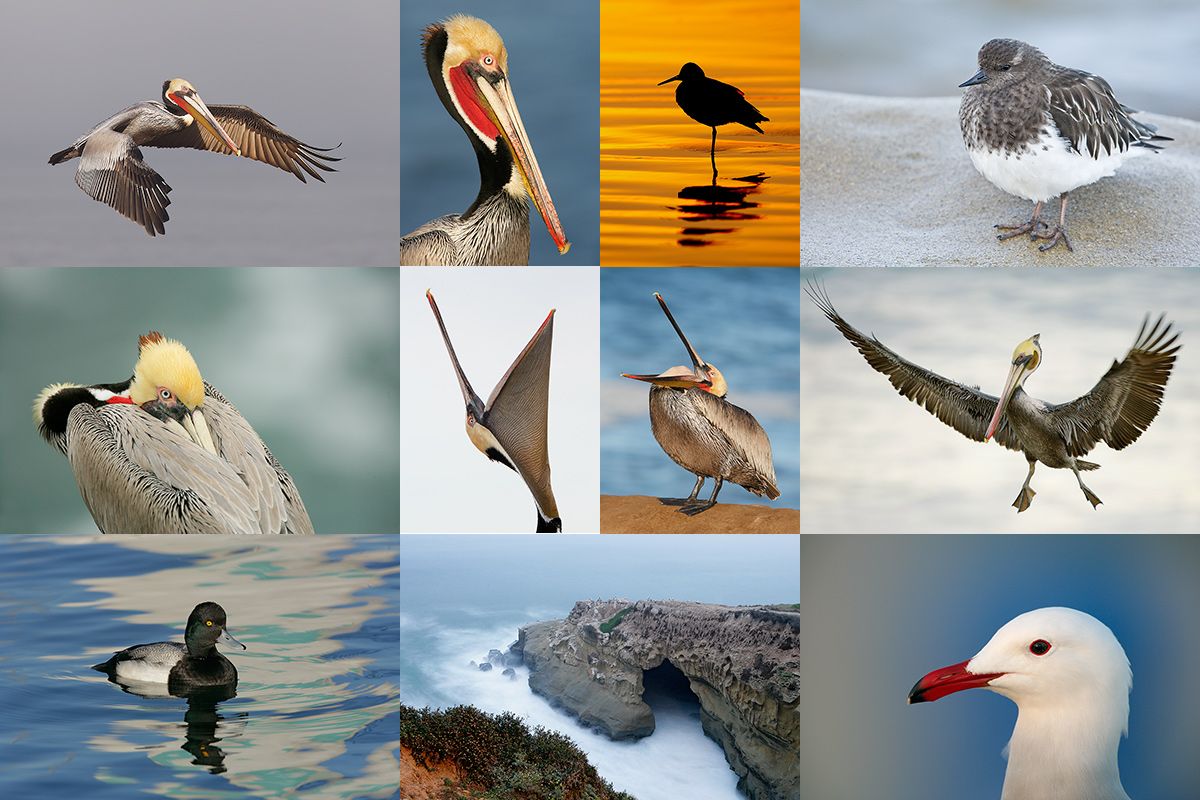
|
|
Variety is surely the spice of life in San Diego. Click on the composite to enjoy a larger version.
|
Getting Up Early and Staying Out Late
On all BIRDS AS ART IPTS including and especially the San Diego IPT, we get into the field early to take advantage of unique and often spectacular lighting conditions and we stay out late to maximize the chances of killer light and glorious sunset silhouette situations. We often arrive at the cliffs a full hour before anyone else shows up to check out the land/sea-scape opportunities.
|
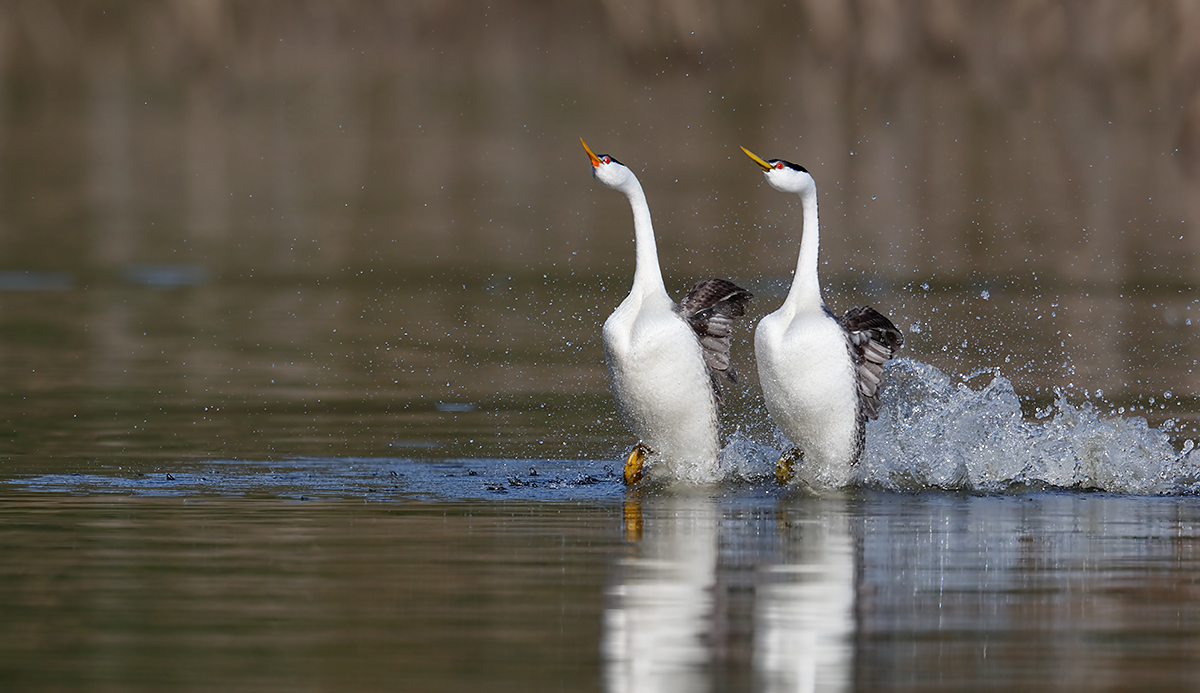
|
|
This image was created in San Diego, CA with the Induro GIT 304L/Mongoose M3.6-mounted Canon EF 500mm f/4L IS II USM lens, the Canon Extender EF 1.4X III, and the simply amazing, astounding, mega mega-pixel Canon EOS 5DS R. ISO 500. Evaluative metering -2/3 stop: 1/2500 sec. at f/6.3 in Av mode. AWB.
61-Point (Automatic selection)/AI Servo/Shutter Button AF as originally framed was active at the moment of exposure (as is always best when photographing moving subjects). Though the optimized image above was a healthy crop from the original the result was a high quality 148+ MB 16-bit file. Click on the image to see a larger version. The AF system selected two AF points, one above the other, between the two birds;the eye of the bird on our right is razor sharp.
Clarke’s X Western Grebe courtship rush
|
The Dancing Grebes Add-On. FRI JAN 25, 2019: $399.
Those registering for the 2019 San Diego IPT might wish to join me for the Dancing Grebe Add-On Morning as above. Please read the details carefully. You will need to wade at least mid-thigh deep with your tripod over an uneven bottom. Lightweight chest waders are advised. Long lenses are needed; a 100-400 will not cut it at this spot, even with a TC. Chances at this location (easily accessible from the IPT hotel), vary from day to day so there will be no guarantees. But when those grebes dance, it can be an amazing rush. We may also enjoy chances to photograph both species, Western and Clarke’s Grebes, at fairly close range.
Help Support the Blog
Please help support my efforts here on the blog by remembering to click on the logo link above each time that you shop Amazon. That would be greatly appreciated. There is no problem using your Prime account; just click on the link and log into your Prime account. With love, artie
If In Doubt …
If in doubt about using the BAA B&H affiliate link correctly, you can always start your search by clicking here. Please note that the tracking is invisible. Web orders only. Please, however, remember to shoot me your receipt via e-mail.




Please Remember to use my Affiliate Links and to Visit the New BAA Online Store 🙂
To show your appreciation for my continuing efforts here, we ask, as always, that you get in the habit of using my B&H affiliate links on the right side of the blog for all of your photo and electronics purchases. Please check the availability of all photographic accessories in the New BIRDS AS ART Online Store, especially the Mongoose M3.6 tripod head, Wimberley lens plates, Delkin flash cards and accessories, and LensCoat stuff.
As always, we sell only what I have used, have tested, and can depend on. We will not sell you junk. We know what you need to make creating great images easy and fun. And please remember that I am always glad to answer your gear questions via e-mail.
I would of course appreciate your using our B&H affiliate links for all of your major gear, video, and electronic purchases. For the photographic stuff mentioned in the paragraph above, and for everything else in the new store, we, meaning BAA, would of course greatly appreciate your business. Here is a huge thank you to the many who have been using our links on a regular basis and those who will be visiting the New BIRDS AS ART Online Store as well.
Facebook
Be sure to like and follow BAA on Facebook by clicking on the logo link upper right. Tanks a stack.
Typos
In all blog posts and Bulletins, feel free to e-mail or to leave a comment regarding any typos or errors. Just be right :).
October 19th, 2018 This Just In!
Berger Brothers on Long Island, NY has a Nikon 500 PF in stock right now. As they are pretty much impossible to get, give Brad Berger a call if you would like to own this lens: Brad Berger President, Berger Bros Camera, P 516-496-1000.
Stuff
As I am traveling in the Southern Ocean, I will be without internet access from the afternoon of October 19 until November 1.
Galapagos Photo-Cruise of a Lifetime/Limit 12/Openings: 3
Right now I have nine folks committed to the 2019 Galapagos Photo Cruise. A friend who had committed to the trip learned that he and his wife might not be able to attend. Thus, I have room for a couple or for two same-sex roommates, and for a male single. If the archipelago is on your bucket list, please get in touch via e-mail asap with questions. If you might be registering with a friend or a spouse do ask about the two at a time discount. See the complete details here.
BIRDS AS ART
BIRDS AS ART is registered in the U.S. Patent and Trademark Office.


Selling Your Used Photo Gear Through BIRDS AS ART
Selling your used (or like-new) photo gear through the BAA Blog is a great idea. We charge only a 5% commission. One of the more popular used gear for sale sites charged a minimum of 20%. Plus assorted fees! Yikes. They went out of business. And e-Bay fees are now up to 13%. The minimum item price here is $500 (or less for a $25 fee). If you are interested please scroll down here or shoot us an e-mail with the words Items for Sale Info Request cut and pasted into the Subject line :). Stuff that is priced fairly — I offer pricing advice to those who agree to the terms — usually sells in no time flat. Over the past year, we have sold many dozens of items. Do know that prices on some items like the EOS-1D Mark IV, the old Canon 100-400, the old 500mm, the EOS-7D and 7D Mark II and the original 400mm DO lens have been dropping steadily. You can always see the current listings by clicking on the Used Photo Gear tab on the orange-yellow menu bar near the top of each blog post page.
Airbnb
For the past few months, I have been hearing folks use the word Airbnb, most notably, Amy Novotny. Out of curiosity I asked a few questions. What I learned amazed me. Join Airbnb and become part of a community that connects global travelers with local hosts across the world. Find a place to stay and discover things to do. Airbnb lists more than 4.5 million homes across 200 countries; you’ll find spacious, affordable options for every occasion. With Airbnb you will travel with confidence as reviews from past guests help you find the right fit. Once you do, our secure messaging makes it easy to coordinate with your host. And Airbnb support teams are available 24/7. Last night I made a reservation for an Airbnb apartment for my upcoming January San Diego visit: 13 nights with a full kitchen and two bedrooms.
Yikes. I almost forgot the best part: Airbnb rates average less than half of even the least expensive chain hotels and motels. If you would like to save $40 on your first booking sign up by using this link: Airbnb. Airbnb does charge clean-up and service fees that make short stays less attractive bargains than long stays.
Those who prefer to stay in a motel or hotel are invited to use the Booking.com link below to save $25.00.
Booking.Com
Several folks on the UK IPT used the Booking.Com link below for their Edinburgh hotels, got great rates, and saved a handsome $25.00 in the process. If you too would like to give Booking.Com a shot, click here and to earn a $25 reward on your first booking. Thanks to the many who have already tried and used this great service.
Money Saving Reminder
If you need a hot photo item that is out of stock at B&H, would enjoy free overnight shipping, and would like a $50 discount on your first purchase, click here to order and enter the coupon code BIRDSASART at checkout. If you are looking to strike a deal on Canon or Nikon gear (including the big telephotos) or on a multiple item order, contact Steve Elkins via e-mail or on his cell at (479) 381-2592 (Eastern time) and be sure to mention your BIRDSASART coupon code and use it for your online order. Steve currently has several D850s in stock along with a Nikon 600mm f/4 VR. He is taking pre-orders for the new Nikon 500 P and the Nikon Z6 mirrorless camera body.
Gear Questions and Advice
Too many folks attending BAA IPTs and dozens of photographers whom I see in the field and on BPN, are–out of ignorance–using the wrong gear especially when it comes to tripods and more especially, tripod heads… Please know that I am always glad to answer your gear questions via e-mail. Those questions might deal with systems, camera bodies, accessories, and/or lens choices and decisions.
Emperor Penguin Logistics Possibilities
We board the Kapitan Khlebnikov, one of four Kapitan Sorokin class icebreakers, on Friday afternoon, October 19, 2018. The plan is to sail south through the Drake Passage and then navigate through the ice in order to get close enough to the Snow Hill Island Emperor Penguin colony to access the colony via helicopter. If that works, then there is a roughly one mile plus walk to the colony. And back. In a perfect world we might get visit the birds six times before heading back to Ushuaia and home. It was made perfectly clear from the get-go that there would be a chance — depending on the ice conditions and the weather, that might not see a single Emperor Penguin or Emperor Penguin chick. Wish us luck.
For an excellent overview of our trip, see Amy’s blog post here.
Emperor Penguin Gear Bag
I left the house with the smaller of my two Think Tank Rolling Bags, the AIRPORT SECURITY™ V3.0. It tipped the scales at only 34 pounds, a record-low by far for me. More typical would be 44 to 46 pounds …
Here is what I am taking:
Nikon AF-S NIKKOR 500mm f/5.6E PF ED VR lens
The 500 PF will be my primary long telephoto lens, often with the TC-E14, rarely, I am assuming, with the TC-E17.
Nikon AF-S NIKKOR 80-400mm f/4.5-5.6G ED VR lens
The 80-400 VR will serve as a wider angle intermediate telephoto and in the event of a 500 PF disaster, as a back-up.
Nikon AF-S NIKKOR 24-120mm f/4G ED VR lens
The 24-120 is my never-leave-home-without-it/all purpose do-everything lens for bird-scapes, ship-shots, scenics, and some close-ups. It replaces the Canon EF 24-105mm f/4L IS II.
Two of these: Nikon D850 DSLR Camera (Body Only)
I love my two D-850s as much as I loved my Canon 5D Mark IV bodies. I will take both bodies to the colony so that I can have the 500 PF and the 80-400 at hand, or in case one of the bodies fails.
Two of these: Nikon AF-S Teleconverter TC-14E III
I cannot afford to lose a 1.4X (as I have done several times in the past) or have a malfunction so I bring a back-up.
Nikon AF-S Teleconverter TC-17E II
I Focus Fine-tuned this with the 500 PF just in case …
The 20mm Extension Tube from this set: Kenko Auto Extension Tube Set DG (12, 20 & 36mm Tubes) for Nikon cameras.
I took this along in case the penguins get friendly.
In my checked bag I have the Induro GIT 204 and my Mongoose M3.6. I went with the lighter tripod to lessen the load on the mile long walk to the colony (perhaps) and because it is more than sturdy enough for the 500 PF. As noted here previously, I made sharp images off the GIT 204 with the 600 VR and the TC-E14 … I have been using the Mongoose for all of my super- and intermediate telephoto lens photography for forever, for everything from 70-200mm to 100-400 II to 500 to 600 to 800mm. It is simply the best. I did not bring a ballhead on this trip; everything done with the 24-105 will be hand held.
Here is what I am leaving at home:
I opted to leave my Nikon AF-S NIKKOR 600mm f/4E FL ED VR lens, the Nikon AF-S NIKKOR 200-500mm f/5.6E ED VR lens, and the Nikon D5 DSLR at home. The 600 VR is simply too heavy to carry on the trek to the colony (should we be lucky enough to do that at least once). The 2-5 is trumped by the 500 PF. And the D5 because there will be only a limited amount of flight photography from the ship.
I will comment on boots and clothing when I get back. If I forget, please remind me.
The Southern Ocean Photography Guide
Yes, at $100 this guide is pricey. But considering that your trip is costing you in excess of $10,000, and often close to three or more times that — depending on your choice of cabin and class of flight service, the stuff you will learn will pay for itself many times over. Not to mention that it will help you make better images. I wrote the guide after my first seven trips to the penguins. Learn more or purchase here.
Your Call?
If you were making a trip to Antarctica, what gear would you bring?
|
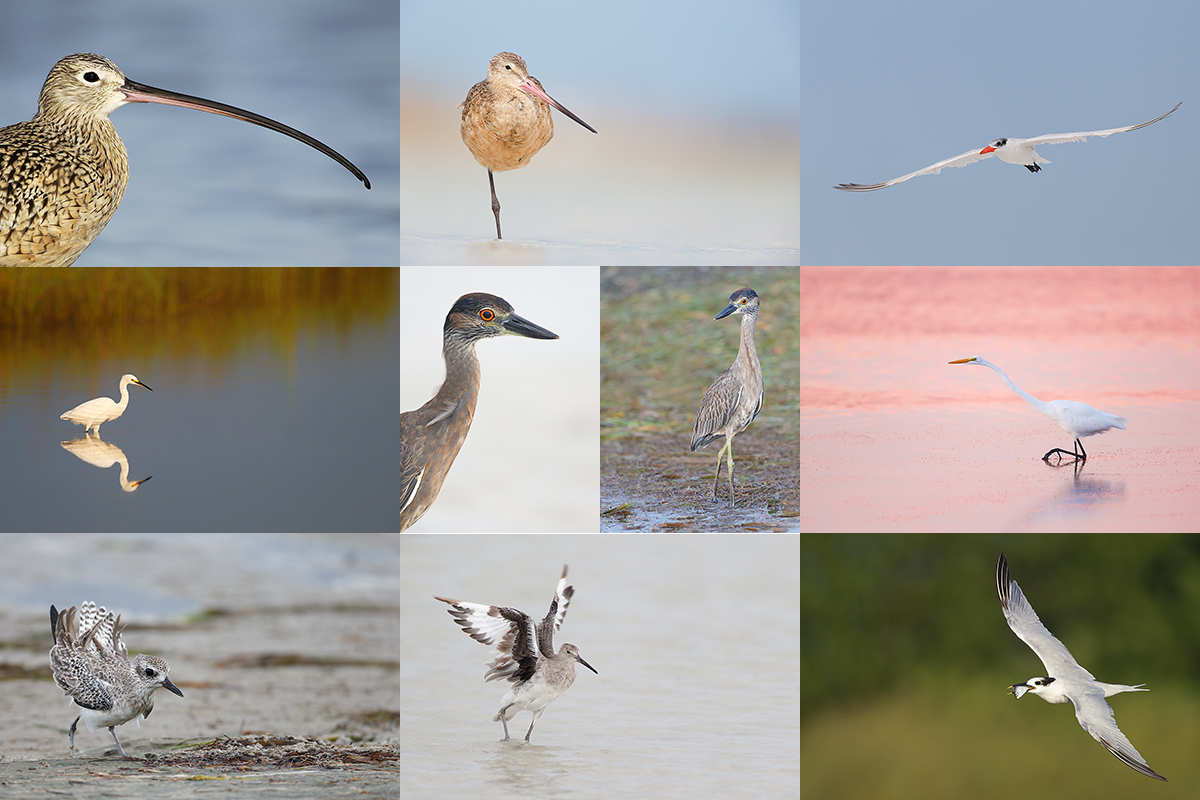
|
|
Fort DeSoto in early winter is rife with tame birds. Click on the composite to enjoy a larger version.
Clockwise from upper left to center: Long-billed Curlew, Marbled Godwit, Caspian Tern, Great Egret, Sandwich Tern with fish, Willet, Black-bellied Plover threat display, Snowy Egret, 2-year old Yellow-Crowned Night-Heron, juvenile Yellow-Crowned Night-Heron.
|
The 2018 Fort DeSoto Early Winter IPT/Thursday December 7 through the morning session on Monday December 10, 2018: 3 1/2 DAYS: $1549. Limit 8/Openings: 7.
Fort DeSoto, located just south of St. Petersburg, FL, is a mecca for migrant shorebirds and terns in early winter. There they join hundreds of egrets, herons, night-herons, and gulls that winter on the T-shaped peninsula. With luck, we may get to photograph two of Florida’s most desirable shorebird species: Marbled Godwit and the spectacular Long-billed Curlew. Black-bellied Plover and Willet are easy, American Oystercatcher almost guaranteed. Great Egret, Snowy Egret, Great Blue Heron, Tricolored Heron, and White Ibis are easy as well and we will almost surely come up with a tame Yellow-crowned Night-Heron or two. We may very well get to see and photograph the amazing heron/egret hybrid that has been present for three year. And we should get to do some Brown Pelican flight photography. In addition, Royal, Sandwich, Forster’s, and Caspian Terns will likely provide us with some good flight opportunities as well. Though not guaranteed, Roseate Spoonbill and Wood Stork might well be expected. And we will be on the lookout for a migrant passerine fallout in the event of a thunderstorm or two.
On the IPT you will learn basics and fine points of digital exposure and to get the right exposure every time after making a single test exposure, how to approach free and wild birds without disturbing them, to understand and predict bird behavior, to identify many species of shorebirds, to spot the good situations, to choose the best perspective, to see and understand the light, and to design pleasing images by mastering your camera’s AF system. Most importantly you will surely learn to evaluate wind and sky conditions and understand how they affect bird photography. And you will learn how and why to work in Manual mode (even if you’re scared of it).
There will be a Photoshop/image review session after lunch (included) each day. That will be followed by Instructor Nap Time.
As with the fall IPT, this one will run with only a single registrant. The best airport is Tampa (TPA). Once you register, you will receive an e-mail with the hotel information. Do know that it is always best if IPT folks stay in the same hotel (rather than at home or at a friend’s place).
A $500 deposit is due when you sign up and is payable by credit card. Balances must be paid by check after you register. Your deposit is non-refundable unless the IPT sells out with eight folks so please check your plans carefully before committing. You can register by calling Jim or Jennifer during weekday business hours at 863-692-0906 with a credit card in hand or by sending a check as follows: make the check out to: BIRDS AS ART and send it via US mail here: BIRDS AS ART, PO BOX 7245, Indian Lake Estates, FL 33855. You will receive a confirmation e-mail with detailed instructions, clothing, and gear advice. Please remember that the meet and greet will take place at 7:30 on the evening of Sunday, September 23. Please shoot me an e-mail if you plan to register or if you have any questions.
|
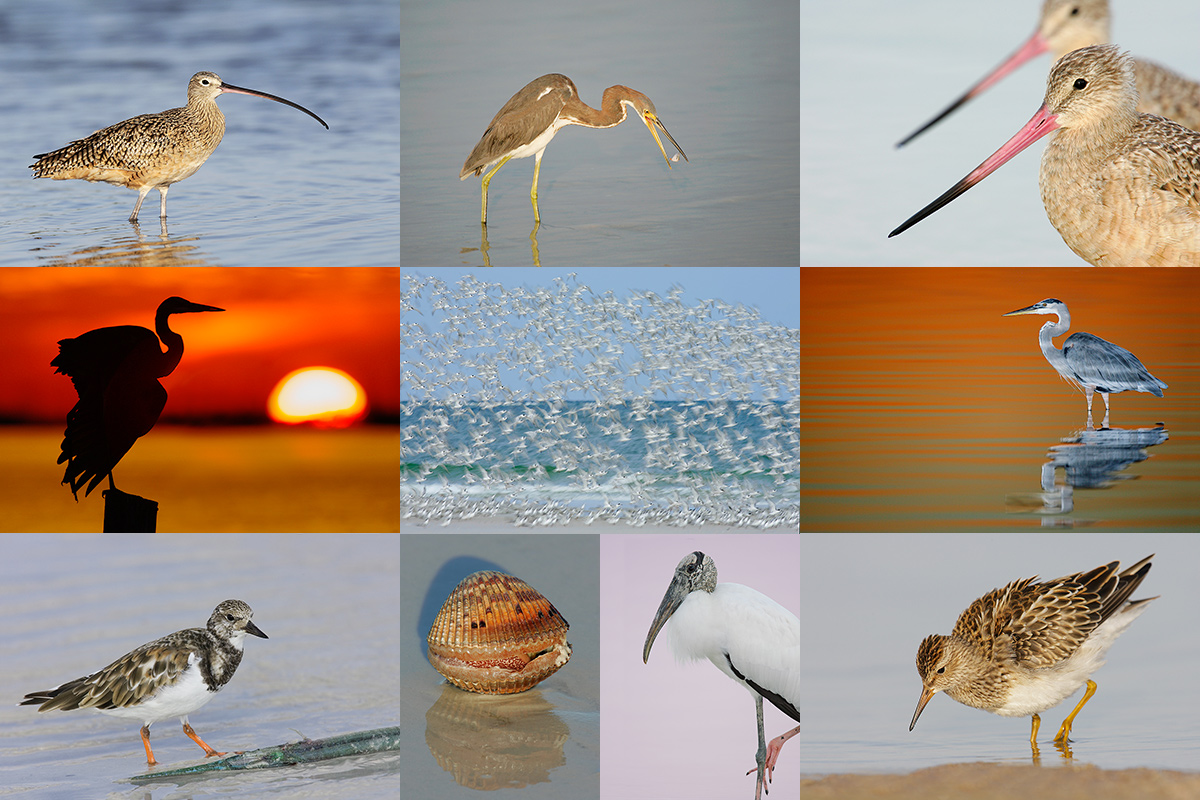
|
|
Obviously folks attending the IPT will be out in the field early and stay late to take advantage of sunrise and sunset colors. The good news is that the days are relatively short in late September. Click on the composite to enjoy a larger version.
Clockwise from upper left to center: Long-billed Curlew, juvenile Tricolored Heron, Marbled Godwits, Great Blue Heron, juvenile Pectoral Sandpiper, Wood Stork, smiling Sea Scallop, Ruddy Turnstone scavenging needlefish, Great Blue Heron sunset silhouette at my secret spot, and southbound migrant tern flock blur.
|
Early and Late
Getting up early and staying out late is pretty much a staple on all BIRDS AS ART Instructional Photo-Tours; on this particular trip we will get lots of sleep as the days are short. Being in the field well before the sun comes up and staying out until sunset will often present unique photographic opportunities, opportunities that will be missed by those who need their beauty rest. I really love it when I am leaving the beach on a sunny morning after a great session just as a carful or two of well-rested photographers arrive.
Help Support the Blog
Please help support my efforts here on the blog by remembering to click on the logo link above each time that you shop Amazon. That would be greatly appreciated. There is no problem using your Prime account; just click on the link and log into your Prime account. With love, artie
If In Doubt …
If in doubt about using the BAA B&H affiliate link correctly, you can always start your search by clicking here. Please note that the tracking is invisible. Web orders only. Please, however, remember to shoot me your receipt via e-mail.




Please Remember to use my Affiliate Links and to Visit the New BAA Online Store 🙂
To show your appreciation for my continuing efforts here, we ask, as always, that you get in the habit of using my B&H affiliate links on the right side of the blog for all of your photo and electronics purchases. Please check the availability of all photographic accessories in the New BIRDS AS ART Online Store, especially the Mongoose M3.6 tripod head, Wimberley lens plates, Delkin flash cards and accessories, and LensCoat stuff.
As always, we sell only what I have used, have tested, and can depend on. We will not sell you junk. We know what you need to make creating great images easy and fun. And please remember that I am always glad to answer your gear questions via e-mail.
I would of course appreciate your using our B&H affiliate links for all of your major gear, video, and electronic purchases. For the photographic stuff mentioned in the paragraph above, and for everything else in the new store, we, meaning BAA, would of course greatly appreciate your business. Here is a huge thank you to the many who have been using our links on a regular basis and those who will be visiting the New BIRDS AS ART Online Store as well.
Facebook
Be sure to like and follow BAA on Facebook by clicking on the logo link upper right. Tanks a stack.
Typos
In all blog posts and Bulletins, feel free to e-mail or to leave a comment regarding any typos or errors. Just be right :).
October 17th, 2018 Stuff
We made it to Ushuaia, Argentina without any hassles. It is cold and dark and windy here. As we do not get on the ship until Friday afternoon, I will spend most of my time working on blog posts for the time I am gone. Do consider joining me on an IPT 🙂
Arash and the 500 PF. And Me.
As regular readers know, I was quite determined to get my hands on a Nikon AF-S NIKKOR 500mm f/5.6E PF ED VR lens before my Antarctica trip. That after originally not even considering the lens. But when I read Arash Hazeghi’s review (below), I realized the almost 1 1/2 pounds lighter than my 200-500mm was a 33% reduction in weight. Not to mention that the 500 PF is tiny and thus much easier to travel with and much easier to hand hold! And when looking at my flight shots from the Fall DeSoto IPT — most created with the hand held 200-500, I realized that nearly all of them were created at 500mm and when I zoomed out I usually should not have! And there were a few times, such as when photographing the bathing Willet (see here), that my left shoulder just plain hurt.
To learn how I managed to get my hands on one see the Last Minute Miracle blog post here.
For the complete article, and to see all of the gear and other images that are in the original post as it was published on Arash’s blog, click here. I have made a very few comments in the version below that was adapted for the BAA Blog (with Arash’s blessings).
To say the least, Arash is quite a bright young man. He is a senior electron device engineer. He received his MS.c. degree and Ph.D. degrees in Electrical Engineering in 2006 and 2011, from Stanford University. His pioneering research on Carbon Nanotubes and quantum capacitance have been cited many times. He is currently focused on the development of cutting edge memory technology. And on top of all that he is clearly one of the world’s best flight photographers. For many years, he has hand held a 600mm f/4 telephoto lens most often with a 1.4X teleconverter. Now that is easy for me to say … Arash is a skilled moderator in the Avian Forum at BPN (BirdPhotographers.Net). I have edited/co-authored several e-Guides for and with him. You can find those here.
AF-S Nikkor 500mm f/5.6 PF Preview
by Arash Hazeghi
A few days ago, I received the new Nikon AF-S 500mm f/5.6 PF. This is the lightest and the smallest Nikon long telephoto lens to date. It uses Phase Fresnel (PF) optics that are similar to Canon’s DO (Diffraction Optics) optics. Upon delivery, I first thought I had been sent the wrong lens as the box seemed too small, smaller than the shipping box used for Nikon AF-S 70-200 f/2.8 VR II, and much smaller than the box my AF-S 200-500mm f/5.6 VR came in. I could not believe a 500mm lens, soft case and padding material could fit into such small box, but this was indeed the new AF-S 500mm f/5.6 PF! Small and light are both understatements when you compare this lens to any other modern 500mm lens. It even looks compact when you put it next to Nikon’s 16-35mm f/4 VR ultra-wide angle lens.
Above, you can see that the new AF-S 500mm f/5.6 PF is shorter and narrower and smaller than the AF-S 200-500mm f/5.6 VR zoom at its fully retracted (200mm) position. If you extend the zoom to 500mm it is simply no contest. The prime is a whopping 2 lbs lighter than the zoom. (Note from artie: the 200-500 weighs in at 5.07 pounds; the 500 PF is 3.21 pounds. So the weight difference is a huge 1.87 pounds. No matter how you look at it, the 500 PF is a feather.) The lens much easier to hand hold. The build quality of the lens is excellent; it feels very solid.
Another interesting feature of this lens is the slide-in removable foot. To remove the foot press the small lever and just slide the foot out to save a few more ounces. The lens can be tripod-mounted even with the foot removed thanks to the tripod mount hole drilled into the base. This lens also features “the ring of fire” buttons around the barrel, these can be programmed to lock AF or switch to a different AF patterns when used with D5/D850 bodies. (Notes from artie: mounting the lens via the screw hole is not a good plan. And I have never once used any of the buttons on a telephoto lens.)
The AF-S 500mm f/5.6 PF has a super telephoto-style control panel. There are three AF modes, A/M , M/A and M. The last one is manual focus, the first two are auto focus. Nikon state M/A is more sensitive to the focus ring rotation: any slight rotation can change the focus whereas is A/M a greater rotation is needed to change the focus, perhaps to prevent focus shift as a result of accidentally touching the focus ring. I never use manual focus so I leave this on A/M. The focus limiter has two positions, full-range or far (8 meters to infinity). The latter is ideal for birds in flight at 500mm. While the far MFD is greater than with the AF-S 200-500mm f/5.6 VR (6m), it will almost surely make initial focusing acquisition faster. VR can be set to normal and sport (both can detect panning, but sport gives a more stable finder image while panning). Memory recall controls the functions of the “ring of fire” buttons. AF-L locks the AF, Memory Recall recalls last focus distance set using the button on the other side of the lens and AF-ON will perform the same function as AF-ON on the camera body. The AF-recall confirmation beep can be disabled using the last switch.
The 500mm f/5.6 PF VR is a winner from a size, weight and build quality point of view. My only gripe is that the hood is made of plastic instead of carbon fiber that is used in the larger super-telephoto lenses. There might be after-market magnesium hoods available at some point. The lens uses a 95mm snap-on cap and takes 95mm screw-on filters. The lens ships with a soft case rather than a pouch! Of course my final judgement and recommendation will be based on the image quality and AF performance in the field, especially with the converter TC-14E III” that gives you 700mm full frame at f/8.
My Comment on Arash’s Blog Post
Arthur E Morris · September 20, 2018 at 03:48:59
Hey Arash, Good job with the review. It leaves me with some questions and one comment.
Since you have done the majority of your flight photography with the 600mm and a 1.4X teleconverter, and since you like to use high shutter speeds, how do you see the 500 PF fitting into your kit? Will you be using it naked all the time or trying flight with the TC-14E (and going to double the ISO)?
With the amazing size and weight gains I would love to see a comparable but of course larger 500 f/4 P.
with love, artie
Arash’s Reply
Ari · September 20, 2018 at 07:55:39
Hey Artie, I am hoping to use it with the TC 1.4 X (700mm at f/8) the same way I used my 400DOII with the 2X III (800mm at f/8), but it depends on how the AF performs. I certainly would like a 600 f/4 PF!
And More
Arthur Morris · September 23, 2018 at 03:28:19
Thanks Arash, I am still not sold. 🙂 I was not aware that you used the 400 DO II with the 2X III much for flight. What sort of shutter speeds (and ISOs) were you using in good light? In poor light?
I do agree 100% that the lack of an f/4 telephoto lens is a big hole in the Nikon line-up.
with love, artie
Ari · September 23, 2018 at 10:34:18
Hi Artie, Some of my all time favorite images were made with that combination; check out the shots here. I used this combo mainly in
the winter in Canada when the word “poor” for light is an understatement!
I was using ISO 1600 and higher which the 1DX II could handle easily with Canon DPP4 software. Now with Nikon I can get similar results with my D850 and even better results with my D5 when using Capture One Pro so I can crank up the ISO without hesitation.
My initial impression of the 500 PF is very positive, AF seems snappy even with the TC and critical sharpness is there too, and with Nikon’s superior Group AF, I’d pick the 500 PF over 400 DO II. It gives 700mm at f/8 as opposed to 800mm at f/8 for 400 DO II but it is significantly lighter, smaller and cheaper plus the D850 makes up for the shorter focal length. I think Canon would have a hard time justifying the 7K price tag of the 400DO II as compared to 500PF if your main subject is birds.
Hope this helps.
Arash’s First Flight Image with the 500 PF/1.4X TC-E 17III/D850 Combo
Arash was quite pleased with the sharpness and fine feather detail in his first flight keeper with the new lens and the 1.4X TC. Arash is a master flight photographer. As I recall, he tried Nikon for flight a while back but stuck with Canon. When I switched in January 2018, we spoke a lot on the phone and he wound up making the jump to the dark side. You can view the image larger still and see what others had to say in the Avian Forum on BPN here.
My Initial Comments
Prompted by Arash’s blog post, I realized the error in my thinking. I was very lucky to get one before my Emperor Penguin trip. The 500 PF is amazingly light and amazingly tiny. When Jim met the UPS driver in town early on the morning of October 15, he called and told me, “I don’t think that this is the right box; it is much too small and light for a 500mm lens …
I actually like the plastic lens hood as it is very light and snaps neatly into place. As far as the specs go, my only disappointment is with the minimum focusing distance of the 500 PF. While it focuses much closer than any other 500mm lenses in production, the MFD of 9.84 feet is not as good as the 7.2 feet of the 200-500mm at 500mm. That assuming that the MFD was measured at 500mm not at 200mm. I will check on that when I get back home.
I am interested in learning about Arash’s choice of the D850 to go with the new lens and the TC-14E III; he was championing the D5 for a long time while I was and am totally in love with my two D-850 bodies.
Careful readers will note fully that I did a 180 on this lens. I am however glad that I have it with me on this trip and look forward to using it soon.
Unsolicited DeSoto IPT Comments
Via e-mail from Jim Miller
I can’t stop thinking about how much fun the DeSoto Fall IPT was, and how much I learned. There were so many things that suddenly made perfect sense after I had been confused for so long. Thank you very much for the wonderful trip, and for being a great teacher. As I worked through the raw files last week, I realized what a fantastic lens the 600 IS II is. Thanks for the rental! Maybe some day I will be able to afford one. Some images for critique are attached.
By the way, the plant we were looking at along the sidewalk in Gulfport is Blue Porterweed. It is worth a few minutes on the internet to read about it: native of Florida and the Caribbean, used for medicine in The Bahamas, etc. We have it in a large pot in the front yard and it takes a lot of water, but it blooms spring through fall. Thank you again, Artie. It was really wonderful to be with you and learn from you.
Via e-mail from Lee Sommie
I want to thank you for making the Fall 2017 Ft. DeSoto IPT such a fun and educational experience for me. I truly did not want the adventure to end. I now look through the viewfinder with an artist’s mindset. And the real bonus was making new friends with fellow students. Thank you for sharing your knowledge and enthusiasm for wildlife photography. I had a great time with you and look forward to more adventures on future IPTs.
Note: after the not-so-recent death of his wife Rene, Lee has fallen in love deeply again and rarely gets out to do any bird photography at all. Good on him!
Followed by this one
BTW. I downloaded Photo Mechanic and started using it in my workflow. Since I like using Lightroom for my adjustments, I found a way to incorporate Photo Mechanic and Lightroom together. Lightroom was driving me crazy with how slow it is to import and preview photos. I was impressed with how fast you could review photos and start editing your photos on the DeSoto Fall IPT. Life is too short to wait for applications to import and preview photos and Photo Mechanic solves that problem.
Thanks again for everything Artie. Your knowledge keeps on giving well after the IPT!
Via e-mail from Muhammad Arif
I had a great time at Fort DeSoto. Thank you for all the instruction, for your help and pointers; my photography has already improved tremendously and I’ve never made such good bird photos before. I wish I could’ve joined you on Monday and Tuesday morning as well but work got in the way. It was also nice to meet everyone on the IPT; sorry that I missed you Ray. Thanks again for everything and I hope to join you at a future IPT sometime again.
|

|
|
Fort DeSoto in early winter is rife with tame birds. Click on the composite to enjoy a larger version.
Clockwise from upper left to center: Long-billed Curlew, Marbled Godwit, Caspian Tern, Great Egret, Sandwich Tern with fish, Willet, Black-bellied Plover threat display, Snowy Egret, 2-year old Yellow-Crowned Night-Heron, juvenile Yellow-Crowned Night-Heron.
|
The 2018 Fort DeSoto Early Winter IPT/Thursday December 7 through the morning session on Monday December 10, 2018: 3 1/2 DAYS: $1549. Limit 8/Openings: 7.
Fort DeSoto, located just south of St. Petersburg, FL, is a mecca for migrant shorebirds and terns in early winter. There they join hundreds of egrets, herons, night-herons, and gulls that winter on the T-shaped peninsula. With luck, we may get to photograph two of Florida’s most desirable shorebird species: Marbled Godwit and the spectacular Long-billed Curlew. Black-bellied Plover and Willet are easy, American Oystercatcher almost guaranteed. Great Egret, Snowy Egret, Great Blue Heron, Tricolored Heron, and White Ibis are easy as well and we will almost surely come up with a tame Yellow-crowned Night-Heron or two. We may very well get to see and photograph the amazing heron/egret hybrid that has been present for three year. And we should get to do some Brown Pelican flight photography. In addition, Royal, Sandwich, Forster’s, and Caspian Terns will likely provide us with some good flight opportunities as well. Though not guaranteed, Roseate Spoonbill and Wood Stork might well be expected. And we will be on the lookout for a migrant passerine fallout in the event of a thunderstorm or two.
On the IPT you will learn basics and fine points of digital exposure and to get the right exposure every time after making a single test exposure, how to approach free and wild birds without disturbing them, to understand and predict bird behavior, to identify many species of shorebirds, to spot the good situations, to choose the best perspective, to see and understand the light, and to design pleasing images by mastering your camera’s AF system. Most importantly you will surely learn to evaluate wind and sky conditions and understand how they affect bird photography. And you will learn how and why to work in Manual mode (even if you’re scared of it).
There will be a Photoshop/image review session after lunch (included) each day. That will be followed by Instructor Nap Time.
As with the fall IPT, this one will run with only a single registrant. The best airport is Tampa (TPA). Once you register, you will receive an e-mail with the hotel information. Do know that it is always best if IPT folks stay in the same hotel (rather than at home or at a friend’s place).
A $500 deposit is due when you sign up and is payable by credit card. Balances must be paid by check after you register. Your deposit is non-refundable unless the IPT sells out with eight folks so please check your plans carefully before committing. You can register by calling Jim or Jennifer during weekday business hours at 863-692-0906 with a credit card in hand or by sending a check as follows: make the check out to: BIRDS AS ART and send it via US mail here: BIRDS AS ART, PO BOX 7245, Indian Lake Estates, FL 33855. You will receive a confirmation e-mail with detailed instructions, clothing, and gear advice. Please remember that the meet and greet will take place at 7:30 on the evening of Sunday, September 23. Please shoot me an e-mail if you plan to register or if you have any questions.
|

|
|
Obviously folks attending the IPT will be out in the field early and stay late to take advantage of sunrise and sunset colors. The good news is that the days are relatively short in late September. Click on the composite to enjoy a larger version.
Clockwise from upper left to center: Long-billed Curlew, juvenile Tricolored Heron, Marbled Godwits, Great Blue Heron, juvenile Pectoral Sandpiper, Wood Stork, smiling Sea Scallop, Ruddy Turnstone scavenging needlefish, Great Blue Heron sunset silhouette at my secret spot, and southbound migrant tern flock blur.
|
Early and Late
Getting up early and staying out late is pretty much a staple on all BIRDS AS ART Instructional Photo-Tours; on this particular trip we will get lots of sleep as the days are short. Being in the field well before the sun comes up and staying out until sunset will often present unique photographic opportunities, opportunities that will be missed by those who need their beauty rest. I really love it when I am leaving the beach on a sunny morning after a great session just as a carful or two of well-rested photographers arrive.
|
|








